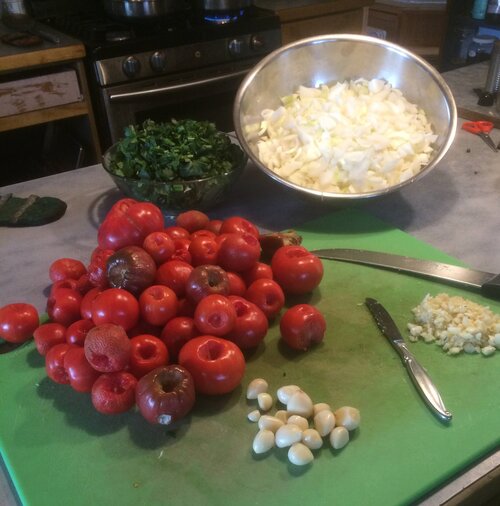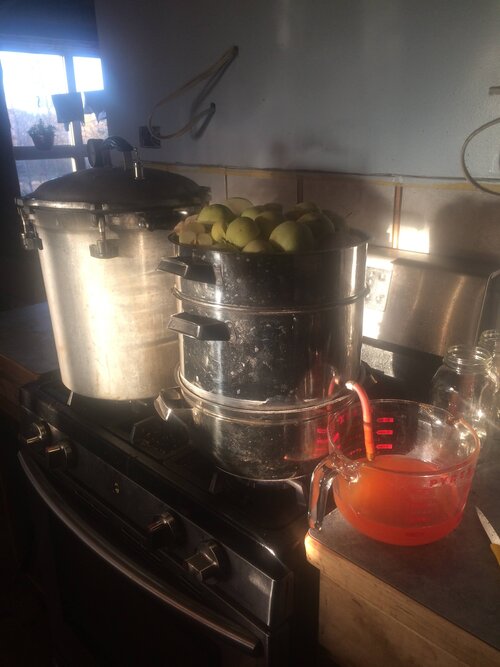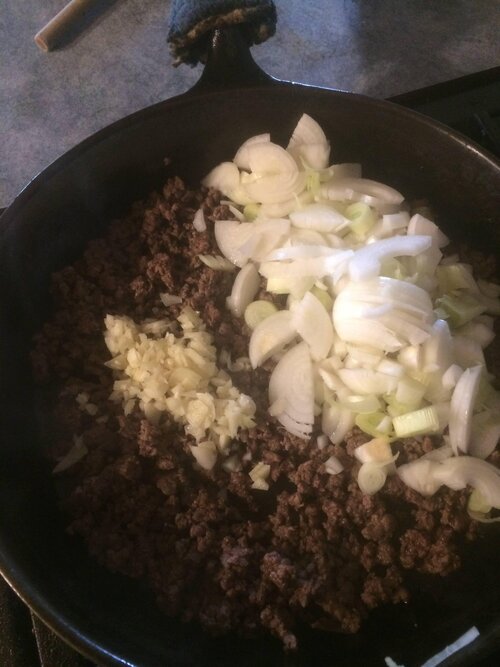What Do I Cook For Dinner Tonight?
posted on
October 8, 2020
Wow! It has been a month since our last visit. Where does the time go?
Did your children head back to the classroom or are you continuing on the homeschool path that you were thrown into when COVID 19 through our daily lives into confusion? Were you laid off as a result of the lockdowns and are now able to get back to work.
I don’t have children in school this year. Our 26 year long homeschooling journey ended in 2019 with the graduation of our youngest. That time has now been filled with other activities.
Autumn has been wonderful this year. We had an early frost, but did not lose any of the garden. Since then it has been warm and sunny. The root veggies have been sizing up well. But alas, in the north we know that winter can come quickly. The past little while has been a whirlwind of activity harvesting the abundance that is coming out of the garden. Tomatoes are being made into stewed tomatoes, salsa and sauces as they ripen. The carrots and beets are harvested and stored in the walk-in cooler until the outside activities slow down. Then I will get to work and get them all canned. Unfortunately we don’t have a root cellar yet and don’t have room in the cooler for long term storage.
As the days get cooler and the pasture growth slows it is time to process the animals that will become beef and pork. By processing in the fall we capture the wonderful flavour and nutrition that comes from eating a diverse mix of pasture species all summer.
Last, but definitely not least is bring in our winter supply of firewood.
CHANGES: SETBACKS OR OPPORTUNITY
Steam Juicing locally harvested apples.
There certainly have been many changes in how we go about our daily lives. Changes that we could not even anticipate at the beginning of the year. They have definitely made day-to-day life more challenging. I find that if we view the circumstances we find our selves it can either feel like someone has pulled the rug out from under our feet. I prefer to look at each circumstance with a much more positive outlook. I like to ask myself, “What good can come of this.”? Is there an opportunity here?
I especially find that on our farm we have had to think “outside the box”.
As our farm team planned for 2020 we had no idea what changes we would have to implement on the fly to adjust to the changing circumstances we would encounter. As a business owner you always want the business to grow. The challenging part was how fast the growth came this year.
We never dreamed that we might not have enough animals to process for our grass-fed/grass-finished beef and lamb and our pasture/forest raised pork sales. We also never thought that we would be looking for an on-farm meat cutter. This has always been a goal we were working toward, but the need came faster than we expected it too.
It is our mission to steward the land that has been entrusted to our family’s care in order to produce nutrient-dense foods that contribute to the health and well-being of the people we serve.

All from the garden! Tomatoes, onions, soup celery and garlic ready to be made into stewed tomatoes.
We have been so thankful for the people who reached out to us looking for clean, locally raised food. We firmly believe that as a community if we want to have the assurance of abundant food we need to choose locally grown and produced food.
Shortly after the lockdown started we were all confronted with the fragility of relying on the just-in-time grocery store model to supply us with the food we need for survival. When we shift our food reliance away from this model and put our focus on supporting local producers we will be in a much more resilient position when it comes to coping with crisis.
Every region has an abundance of small farms that would love to have the opportunity to serve their local areas with high quality food. As small farmers, standing back and watching the panic that grocery store shortages caused it saddens us. We just want to shout out that we have food available. Food that is more nutrient dense and higher quality than what can be purchased in stores. Farmers who you can develop relationships of trust with. Food that we have put our hearts into raising.
HOW CAN OUR FARM HELP YOU?
As a small farm we know that the busyness of life can be overwhelming. Because we are so connected with the living creation on a daily basis we are very attuned to seasonality.
During the busy time of autumn we look for ways to make our daily tasks flow more. When it comes to meal planning one of those ways is to always have a selection of meat in the freezers. I know what we have on hand and can plan accordingly.
To help you with your meal planning we have put together four new Bundles. In addition to our Grilling Bundle we now have the following:
Harmonys Way Family Farm grassfed ground beef, onions and garlic. All harvested from our farm.
- The Perfect Autumn Beef Bundle
- Ground Beef Bundle
- Variety Bundle
- Pork Bundle
- In each bundle you will find a variety of cuts from stew meat, ground beef, roasts and sausages just to name a few. Each bundle is $100.00.
BUT, WHY WOULD YOU WANT TO PURCHASE A BULK BUNDLE?
- Instead of purchasing a half an animal which can be a big upfront cost (but the most economical) our bundles give you the flexibility of a variety of cuts plus a 10% savings over our regular retail prices.
- Still can’t decide if this is something for you, check out our online store. You will find a complete description of each of our bundles.
- We would love to hear what changes have occurred in your life and how you are dealing with all the changes. Together we can weather the storms, alone we risk capsizing the boat.
- P.S.: Stay tuned! I will be posting some new recipes that will give you some simple meal ideas using our grass-fed, grass-finished, pasture/forest raised meat. In the meantime check out our recipe page.





